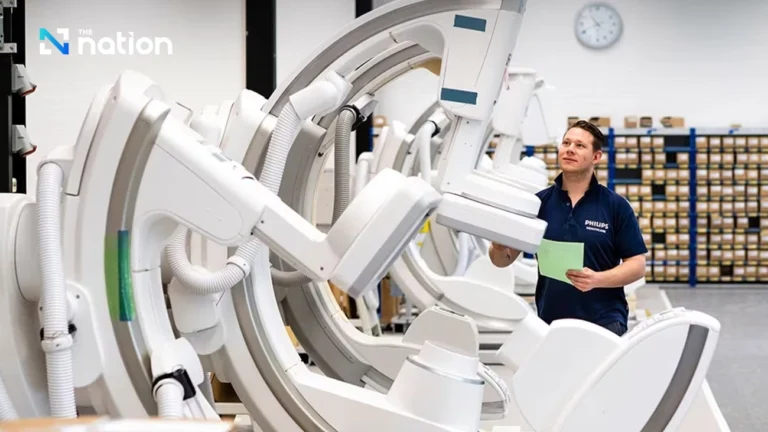
Integrated diagnostics that supports multidisciplinary collaboration: Advances in integrated diagnostics will allow different healthcare professionals to more easily exchange patient data and collaborate more efficiently and effectively.
For cancer patients, this means cancer can be more accurately diagnosed and treated at an earlier stage when good treatment outcomes are more likely.
Improved interoperability improves monitoring and coordination of care. Interoperability is a long-standing challenge in healthcare, due to the complex and fragmented nature of most healthcare IT and data infrastructures.
New interoperability capabilities allow disparate medical devices and systems to be brought together in one interface to create a comprehensive overview of a patient's condition. This allows caregivers to confidently recommend treatments from anywhere in the hospital, reducing the pressure of information overload.
Recent innovations such as visual patient avatars provide further insight by transforming important and complex patient data into easy-to-understand displays.
Early detection and intervention of risks based on predictive analytics: Already today, predictive analytics is helping healthcare providers predict and manage patient flow, allowing them to deploy staff and resources where they are needed most.
Through continuous monitoring of medical devices such as MR scanners, predictive analytics can also help identify when certain hardware parts require maintenance or replacement.
In the clinical field, predictive analytics can support early detection of patient health risks based on vital signs and other patient data. These capabilities are invaluable in acute care, where patients' lives depend on timely intervention.

Tackle health disparities with technology: Billions of people around the world still lack access to the health services they need, and health inequalities are widening even in countries with well-resourced health systems. The need for more equitable and sustainable healthcare has never been more urgent.
Smart technology to help you establish and maintain a healthy routine: People continue to seek medical technology that fits seamlessly into their lives and adjusts to their evolving needs and preferences. This healthcare technology trend will grow and encourage healthier behaviors.
For example, an electric toothbrush that syncs with an AI-powered application can collect brushing data and provide personalized recommendations to improve the user's habits.
Addressing the environmental impact of healthcare IT: Digital solutions are highly scalable, supporting widespread prevention, improving triage, and reducing treatment costs, enabling a transition from resource-intensive clinical settings to lower-cost sites and homes.
And for the 3.5 billion people around the world who currently lack access to healthcare, digital healthcare technologies can expand access to much-needed sustainable healthcare models.
The trend of health technology companies, healthcare systems, suppliers, and other stakeholders working together to reduce the environmental impact of healthcare IT for a sustainable future is expected to continue this year and beyond.

Green procurement transforms the healthcare supply environment: In response to the pressing need to decarbonize healthcare, health technology companies, healthcare systems, and other stakeholders have been promoting sustainable ways of working across all parts of the healthcare value chain.
With environmental, social and governance (ESG) disclosure requirements expanding significantly around the world, the implementation of sustainable sourcing will help reduce climate change while protecting human health and safeguarding social progress. This will be a necessary strategy for health systems and governments looking to mitigate biodiversity loss. Health equity.
Teaming up to reduce healthcare's impact on the planet: As the impact of environmental health on human health becomes more widely recognized, the trend of healthcare systems proactively adopting strategies to reduce their environmental footprint is expected to continue.
However, as organizations realize the financial impact of climate risks is significant, the natural risks of roads can be overlooked. We therefore expect to see a growing trend towards the adoption of 'natural capital accounting' to support better decision-making regarding resource use management and to assist companies in addressing science-based natural environment goals.
On a global scale, collaboration across the value chain is essential as individual organizations may not have a large biodiversity footprint, but when spatially fragmented efforts are integrated, ecosystem playback becomes more effective.


